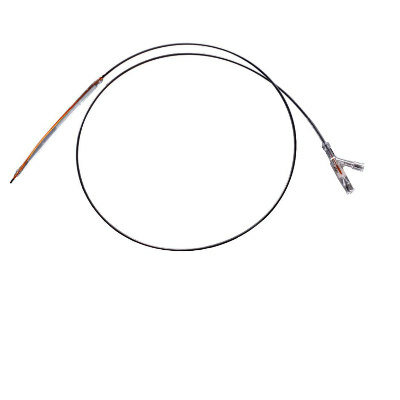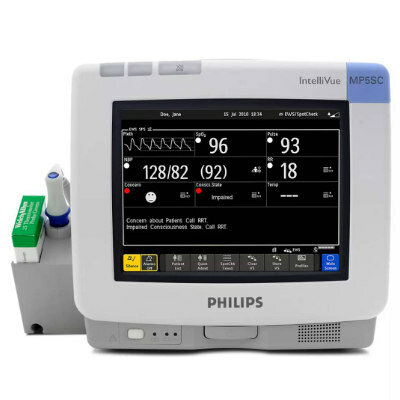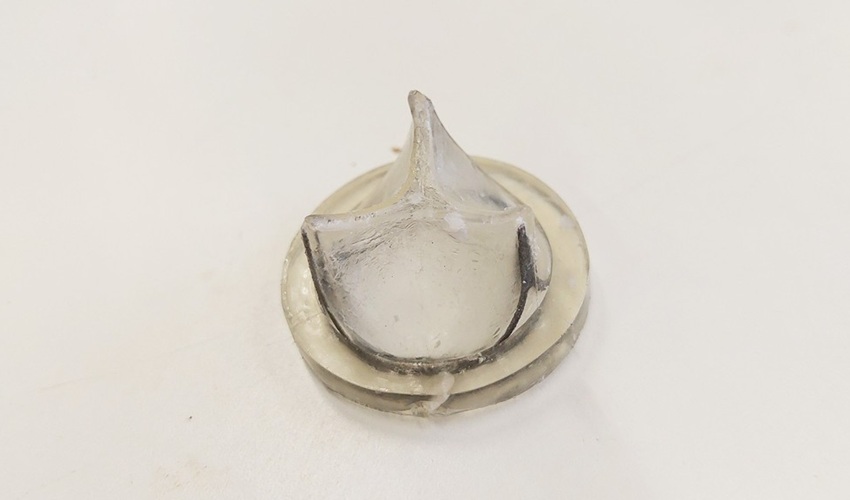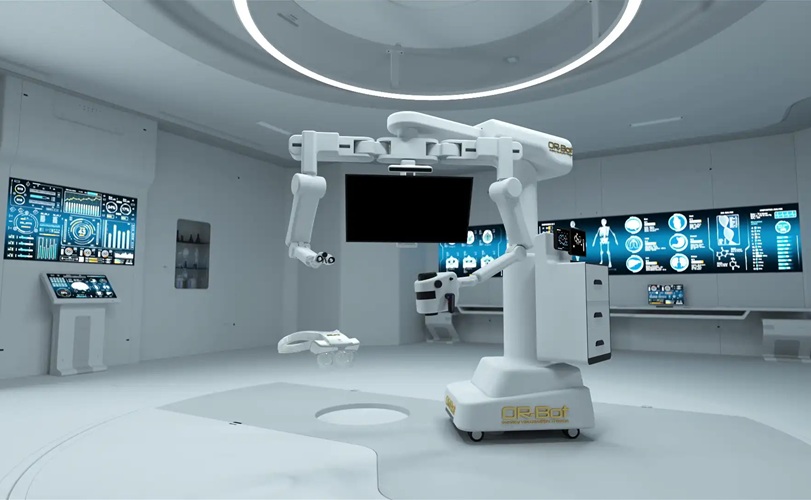Innovative Robotic Arm Performs Complex Tasks 
|
By HospiMedica International staff writers Posted on 27 May 2014 |
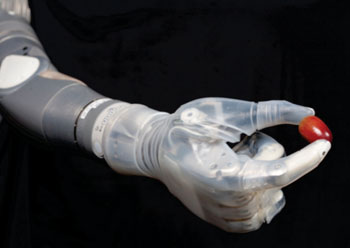
Image: The DEKA arm holding a grape (Photo courtesy of DARPA – Defense Advanced Research Projects Agency).
A new prosthetic arm merges biology and engineering to perform multiple, simultaneous powered movements controlled by electromyogram (EMG) electrodes.
The DEKA Arm System is intended to restore functionality for upper extremity amputees occurring at the shoulder joint, mid-upper arm, or mid-lower arm; it cannot be configured for limb loss at the elbow or wrist joint. The battery-powered DEKA is the same shape and weight as an adult arm, and has six user-selectable grips. Inside the system is a combination of mechanisms—including switches, movement sensors, and force sensors—that cause the prosthesis to move in up to 10 powered movements with simultaneous control of multiple joints.
To enable the creation of the arm system, researchers melded various technologies, such as miniaturization of parts for motors, computer controls, and sensors, and manufacturing processes with lightweight, but strong materials. A variety of input devices is used, including wireless signals generated by sensors on the user’s feet. Other sensors in the hand section provide feedback on grip strength, allowing the DEKA arm to handle objects as delicate as grapes and eggs, but also operate power tools, such as a hand drill.
The DEKA Arm System is a project of DEKA Integrated Solutions (Manchester, NH, USA), and was funded by the US Defense Advanced Research Projects Agency (DARPA; Arlington, VA, USA). The system, which has been dubbed “Luke” by its developers (after Star Wars protagonist Luke Skywalker), has been approved by the US Food and Drug Administration (FDA, Silver Spring, MD, USA).
“This innovative prosthesis provides a new option for people with certain kinds of arm amputations,” said Christy Foreman, director of the office of device evaluation at the FDA Center for Devices and Radiological Health (CDRH). “The DEKA Arm System may allow some people to perform more complex tasks than they can with current prostheses in a way that more closely resembles the natural motion of the arm.”
Related Links:
DEKA Integrated Solutions
US Defense Advanced Research Projects Agency (DARPA)
US Food and Drug Administration
The DEKA Arm System is intended to restore functionality for upper extremity amputees occurring at the shoulder joint, mid-upper arm, or mid-lower arm; it cannot be configured for limb loss at the elbow or wrist joint. The battery-powered DEKA is the same shape and weight as an adult arm, and has six user-selectable grips. Inside the system is a combination of mechanisms—including switches, movement sensors, and force sensors—that cause the prosthesis to move in up to 10 powered movements with simultaneous control of multiple joints.
To enable the creation of the arm system, researchers melded various technologies, such as miniaturization of parts for motors, computer controls, and sensors, and manufacturing processes with lightweight, but strong materials. A variety of input devices is used, including wireless signals generated by sensors on the user’s feet. Other sensors in the hand section provide feedback on grip strength, allowing the DEKA arm to handle objects as delicate as grapes and eggs, but also operate power tools, such as a hand drill.
The DEKA Arm System is a project of DEKA Integrated Solutions (Manchester, NH, USA), and was funded by the US Defense Advanced Research Projects Agency (DARPA; Arlington, VA, USA). The system, which has been dubbed “Luke” by its developers (after Star Wars protagonist Luke Skywalker), has been approved by the US Food and Drug Administration (FDA, Silver Spring, MD, USA).
“This innovative prosthesis provides a new option for people with certain kinds of arm amputations,” said Christy Foreman, director of the office of device evaluation at the FDA Center for Devices and Radiological Health (CDRH). “The DEKA Arm System may allow some people to perform more complex tasks than they can with current prostheses in a way that more closely resembles the natural motion of the arm.”
Related Links:
DEKA Integrated Solutions
US Defense Advanced Research Projects Agency (DARPA)
US Food and Drug Administration
Latest Critical Care News
- Cuff-Free Blood Pressure Monitoring Device to Improve Early Detection and Management of Hypertension
- New Understanding of Barrett’s Esophagus Formation to Enable Earlier Intervention and Diagnosis
- 3D Printed Functional Human Islets Could Transform Type 1 Diabetes Treatment
- AI Model Predicts ICU mortality in Heart Failure Patients
- Smart Capsule Offers Real-Time Profiling Across GI Tract
- Ultra-Thin Implant Helps Patients with Spinal Cord Injury Recover Lost Functions
- Portable Cell Therapy Device to Enable Rapid On-Demand Modification of RBCs at POC
- Monitoring Airborne Fungal Spores Could Help Predict COVID-19 & Flu Surges
- New System Measures Blood Sodium Without Needles
- Sleep Data from Wearable Device May Help Predict Preterm Birth
- AI Tool Interprets Echocardiograms in Minutes
- Electrochemical Catheter Hub Prevents Bloodstream Infections
- Noninvasive Double Microbubble Delivery Approach Marks Breakthrough in Brain Cancer Treatment
- Self-Healing Skin-Like Material to Find Applications in Health Monitoring, Surgery and Implants
- Highly-Sensitive Electronic Skin Allows Robots to Feel Heat, Pain and Pressure

- AI-Powered Wearable Sensor Predicts Labor Onset in Pregnant Women
Channels
Surgical Techniques
view channel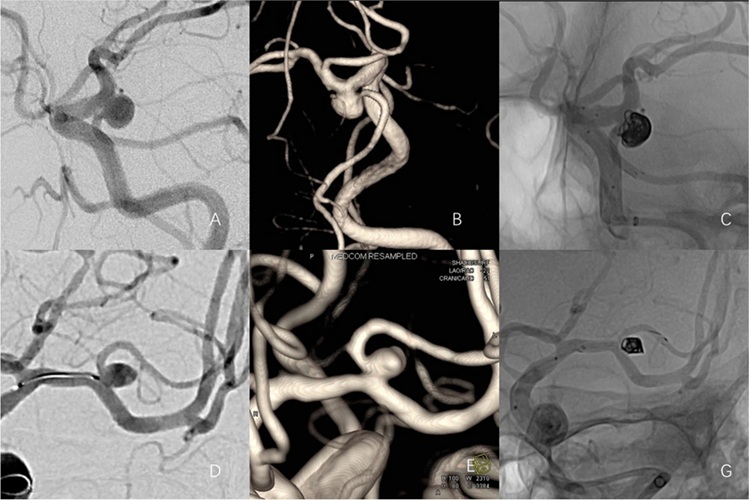
Neuroform Atlas Stent-Assisted Coiling Found Effective Even in Smaller Arteries
Aneurysms, especially when located in the brain, can be life-threatening if not treated effectively. Intracranial aneurysms, caused by the dilation of blood vessels due to weaknesses in the vessel wall,... Read more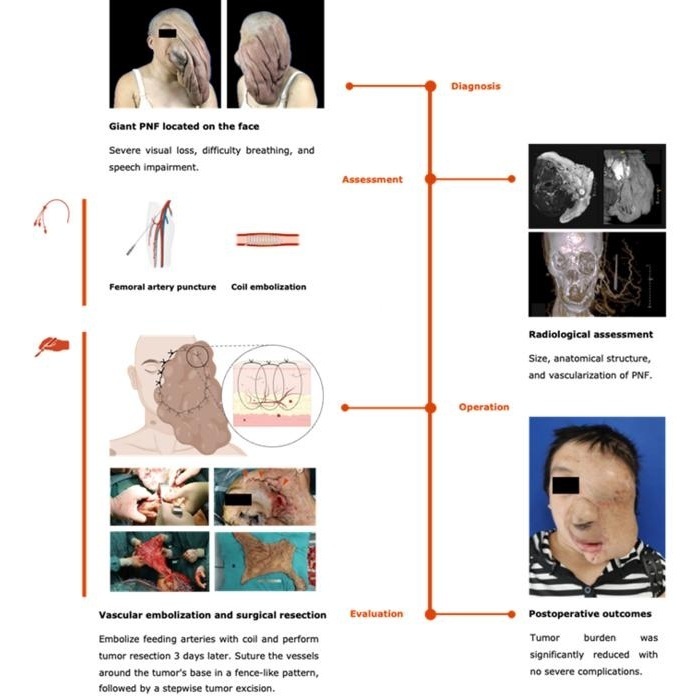
New Surgical Technique Safely Removes Giant Nerve Tumors
Giant plexiform neurofibromas (PNF) are benign tumors commonly associated with neurofibromatosis Type 1 (NF1), a genetic disorder affecting approximately 1 in 3,000 live births. These tumors, which occur... Read morePatient Care
view channel
Revolutionary Automatic IV-Line Flushing Device to Enhance Infusion Care
More than 80% of in-hospital patients receive intravenous (IV) therapy. Every dose of IV medicine delivered in a small volume (<250 mL) infusion bag should be followed by subsequent flushing to ensure... Read more
VR Training Tool Combats Contamination of Portable Medical Equipment
Healthcare-associated infections (HAIs) impact one in every 31 patients, cause nearly 100,000 deaths each year, and cost USD 28.4 billion in direct medical expenses. Notably, up to 75% of these infections... Read more
Portable Biosensor Platform to Reduce Hospital-Acquired Infections
Approximately 4 million patients in the European Union acquire healthcare-associated infections (HAIs) or nosocomial infections each year, with around 37,000 deaths directly resulting from these infections,... Read moreFirst-Of-Its-Kind Portable Germicidal Light Technology Disinfects High-Touch Clinical Surfaces in Seconds
Reducing healthcare-acquired infections (HAIs) remains a pressing issue within global healthcare systems. In the United States alone, 1.7 million patients contract HAIs annually, leading to approximately... Read moreHealth IT
view channel
Printable Molecule-Selective Nanoparticles Enable Mass Production of Wearable Biosensors
The future of medicine is likely to focus on the personalization of healthcare—understanding exactly what an individual requires and delivering the appropriate combination of nutrients, metabolites, and... Read more
Smartwatches Could Detect Congestive Heart Failure
Diagnosing congestive heart failure (CHF) typically requires expensive and time-consuming imaging techniques like echocardiography, also known as cardiac ultrasound. Previously, detecting CHF by analyzing... Read moreBusiness
view channel
Bayer and Broad Institute Extend Research Collaboration to Develop New Cardiovascular Therapies
A research collaboration will focus on the joint discovery of novel therapeutic approaches based on findings in human genomics research related to cardiovascular diseases. Bayer (Berlin, Germany) and... Read more








